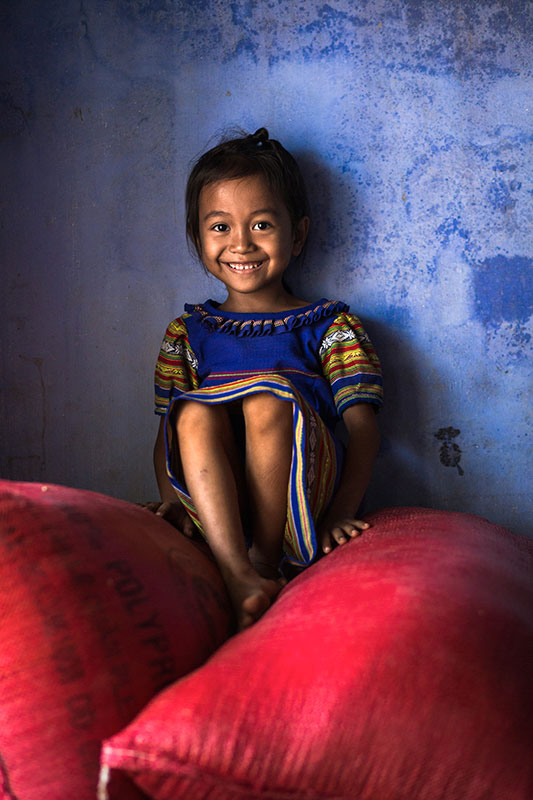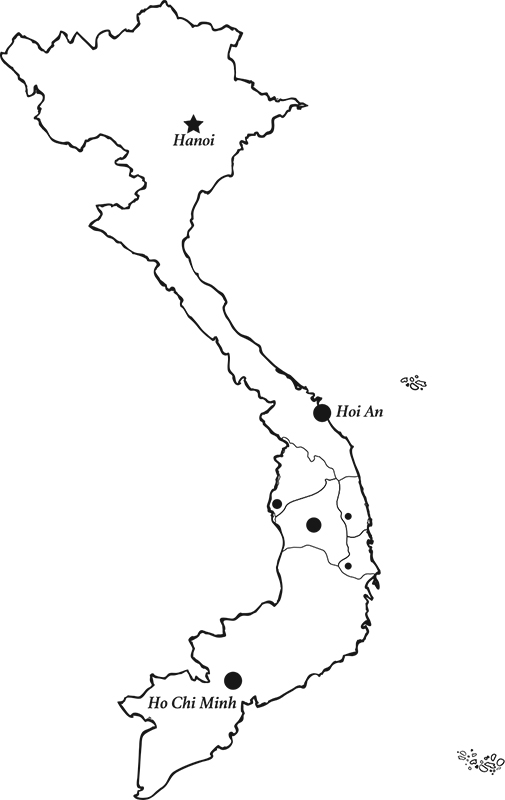I met the Bahnar people for the first time in 2013, during a motorbike trip between Hoi An and Kon Tum. This ethnic group is well known for the spectacular architecture of their communal house often called Rong House, built at the centre of each village. It is characterized by its columns, which suspend it about two metres above the ground – protecting them notably from tigers! – and a roof that reaches up to 20 metres in height, symbolizing the prosperity of the community.
The women of this ethnic group are recognized for their extraordinary talent as weavers and learn the art of weaving using a traditional loom as early as 13 or 14 years of age. Now, most of their costumes are made with purchased fabric and synthetic dyes rather than natural tints. The Bahnar people no longer wear their traditional dress every day, particularly in communities near urban areas, but making it is still a strong activity in central Vietnam, and most Bahnar wear their costumes during festivals to celebrate the New Year. Partnerships have recently emerged to foster the preservation and the passing down of this tradition. Lang Yen was six years old when I met her in 2017. She was not in her traditional costume, but wore it with pride when I requested it for the photograph. I went to see her again in 2018 as part of my Giving Back Project that now provides her with financial support for the entirety of her education. In 2020, I returned and was pleasantly surprised to find out that Bahnar children now wear their traditional costumes every Monday to go to school to increase cultural pride.

